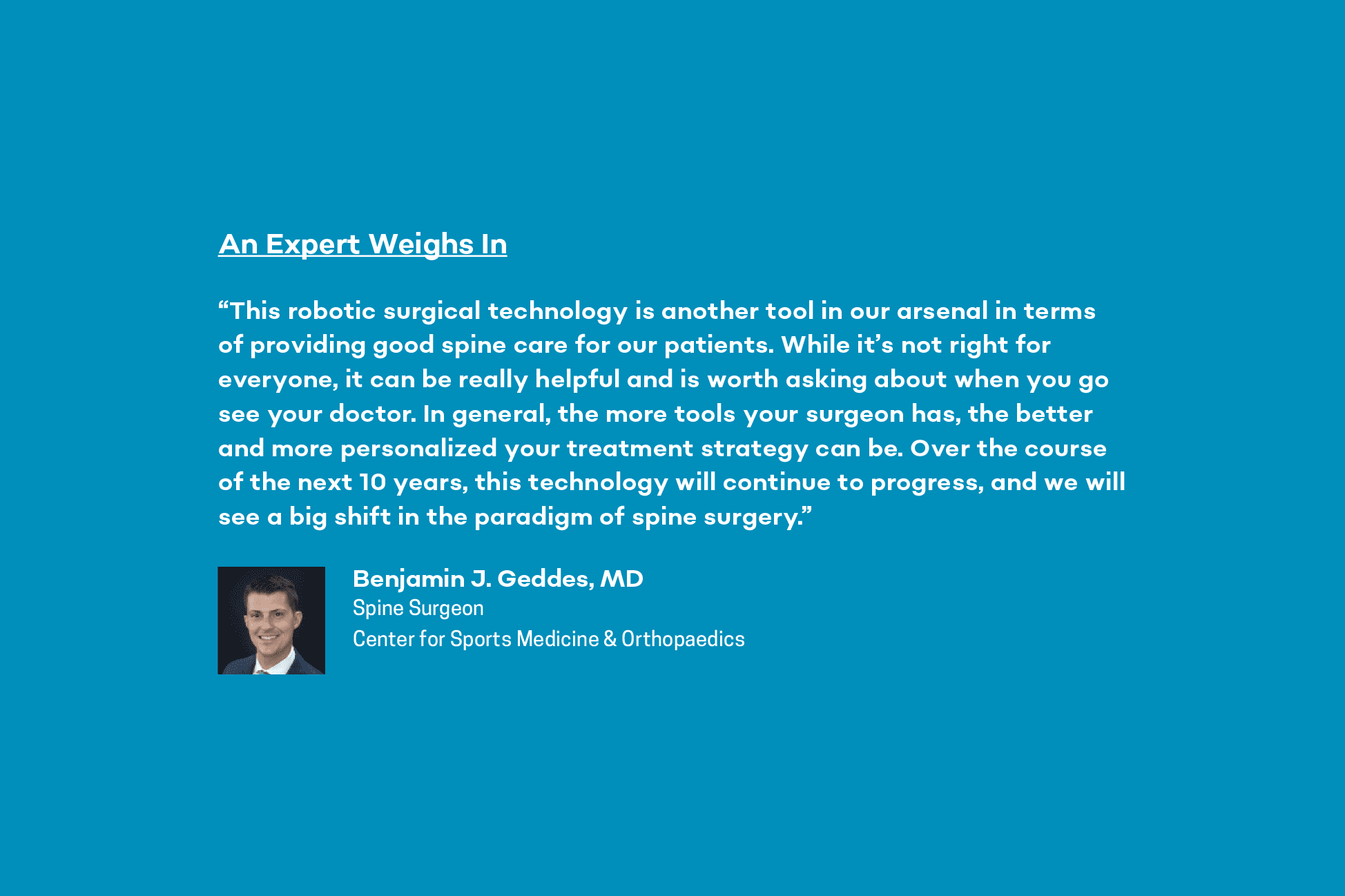Advancements in Medicine Section
Understanding Spine Pain
The spine is made up of 24 movable vertebrae that run from your neck all the way down your lower back. These are divided into three main regions: the cervical spine, which is the first seven vertebrae; the thoracic spine, which is the following 12 vertebrae; and the lumbar spine, which is the last five vertebrae. If your spine is healthy, you should be able to stand upright, bend, twist, and more without any problems. Unfortunately, a large portion of Americans suffer from neck and back issues related to the spine or its surrounding tissues.
While trauma or tumors can cause spine pain, the two most common issues affecting the spine are degenerative disease and scoliosis. Degeneration of the joints and/or discs of the spine is caused by repeated wear and tear over the years. Scoliosis is a deformity of the spine that results in a curvature that can worsen over time.
New Solutions
In the early days, traditional surgery to relieve pressure and pain and stabilize the spine was performed freehand. This meant that your surgeon used their knowledge of human anatomy to guide the placement of the screws in the spine. Later, X-rays were added, which added time but made the process a bit more precise.
The addition of intra-operative navigation has further increased the accuracy in which screws can be placed and is rapidly becoming the gold standard in spine surgery. With the relatively new addition of robot-assisted technology, the boundaries will continue to be pushed.
What to Expect from the Procedure
To begin, the surgeon will drive a metal pin or wire (about 1/3 the diameter of a pencil eraser) in the back of the pelvic bone, which connects the arm of the robot to the patient. This keep things from shifting during the surgery. Then, a preoperative CT scan is loaded into the cutting-edge anatomy recognition software to help the surgeon identify strategic screw placement. In conjunction with real-time computer-assisted navigation, the surgeon will guide the robotic tools through the system’s console and insert the screws into the spine with precision.
Benefits to Patients
Advancements in the field of spine surgery have been revolutionary, resulting in improved outcomes for patients. Robot-assisted spine surgery means less blood loss, a shorter hospital stay, less post-operative pain, a quicker return to an active lifestyle, and more precise screw placement.


